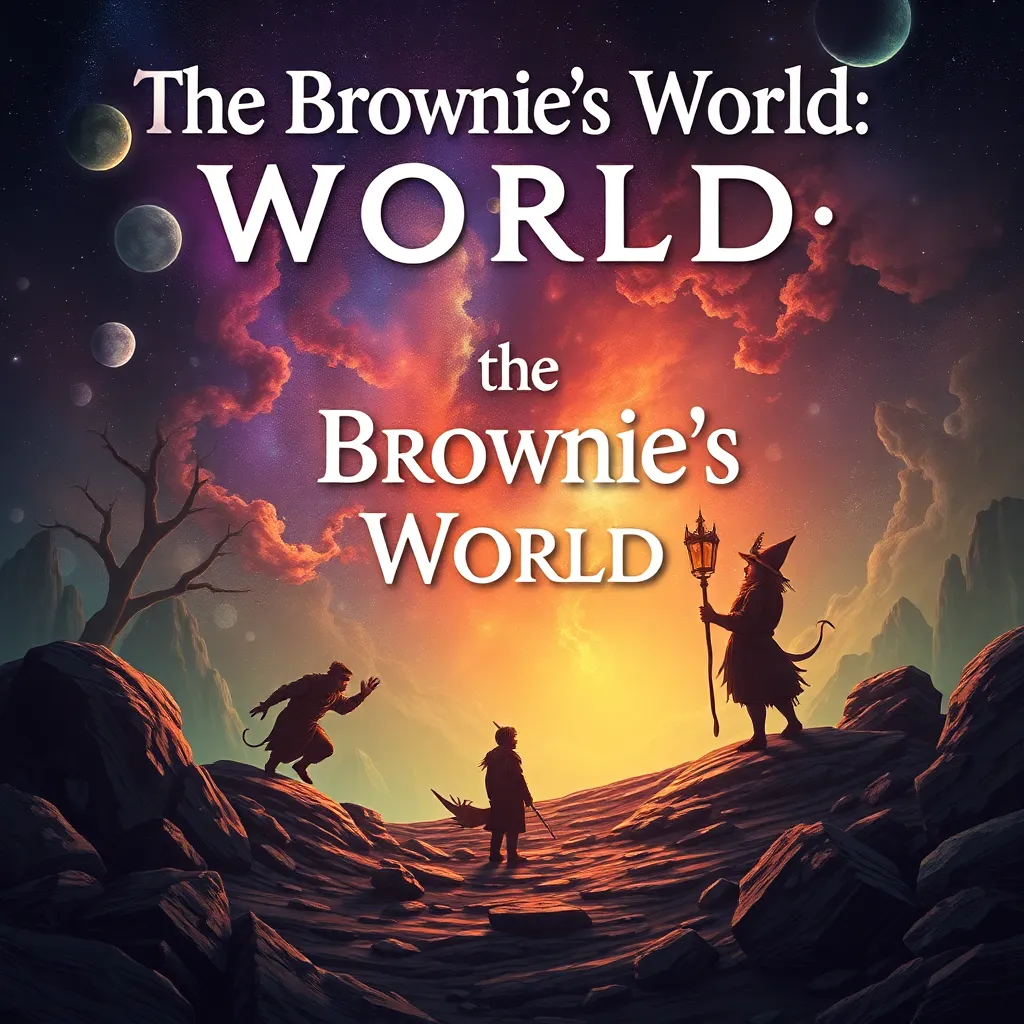The Brownie’s World: Exploring the Universe of Myth & Legend
I. Introduction to Brownies
The term “brownie” conjures up various images, from the beloved chocolate dessert to a small, mischievous creature from folklore. In the realm of myth and legend, brownies are depicted as helpful spirits or household fairies, often associated with good fortune and domestic harmony. They have their roots deeply embedded in the folklore of the British Isles, particularly Scotland and Ireland, where their stories have enchanted generations.
In this article, we will delve into the fascinating world of brownies, exploring their origins, characteristics, and cultural significance across different societies.
II. Historical Roots of Brownies
Brownies have a rich historical background that can be traced back to ancient oral traditions. The earliest mentions of brownie-like creatures appear in Scottish folklore, where they were often described as small, helpful beings that would perform chores for families in exchange for food or a small offering.
Over the centuries, brownie tales evolved, influenced by changing societal norms and cultural exchanges. In medieval texts, brownies were sometimes depicted as more sinister beings, while in later literature, their image shifted back to that of friendly household helpers. This evolution reflects the changing perceptions of the supernatural in society.
III. Characteristics and Traits of Brownies
Brownies are typically characterized by their small stature, often described as standing about a foot tall. Their physical appearance can vary, but they are generally portrayed with:
- Brown or earth-toned skin, resembling the color of dirt or soil
- Long hair, sometimes wild and unkempt
- Simple clothing, often made from natural materials like moss or leaves
- Large, expressive eyes that convey mischief and wisdom
In terms of behavior, brownies are known for their:
- Helping nature: They often assist with household chores, such as cleaning or tending to livestock.
- Mischievous tendencies: While generally benevolent, brownies can play tricks on those who disrespect their domains.
- Preference for anonymity: Brownies are elusive creatures, often shying away from human sight.
IV. Regional Variations of Brownie Legends
While brownies are predominantly associated with Scottish and Irish folklore, variations of these beings exist in other cultures. In Scotland, they are often called “Brownies” or “Brounie,” while in Ireland, the term “Leipreachán” (leprechaun) is more commonly used, although the latter has distinct characteristics.
In other cultures, similar creatures can be found:
- In Slavic folklore, the “Domovoi” serves as a household spirit, protecting the home and its inhabitants.
- In German folklore, the “Heinzelmännchen” are helpful gnomes that assist with domestic tasks.
- In Norse mythology, “Tomte” or “Nisse” are small beings that help with farming and household chores.
V. Brownies in Modern Pop Culture
In contemporary culture, brownies have found their way into various forms of media, from literature to film and video games. They often appear as charming, helpful characters that provide comic relief or aid to heroes. Some notable examples include:
- The “Brownies” in the “Rainbow Brite” series, who assist the protagonist with their colorful adventures.
- Representation in fantasy books like “The Hobbit,” where small creatures aid larger heroes.
- Video games featuring brownie-like characters that offer quests or assistance to players.
The portrayal of brownies in modern media has contributed to their enduring popularity and made them accessible to new generations.
VI. The Symbolism of Brownies
Brownies symbolize various concepts in folklore and society. They are often viewed as:
- Protectors of the home: Their presence is believed to bring good luck and prosperity.
- Embodiments of hard work: Brownies are associated with diligence and the value of helping others.
- Representatives of the unseen: They remind us of the magic and mystery that exist beyond our understanding.
As protectors and helpers, brownies play a role in reinforcing community values and the importance of cooperation, kindness, and respect for one’s surroundings.
VII. The Brownie Phenomenon: Folktales and Storytelling
Brownies have inspired a plethora of folktales, often imbued with moral lessons. Some popular stories include:
- A tale of a family that neglects their chores only to find their house in disarray when the brownie leaves in frustration.
- The story of a young girl who befriends a brownie and learns the importance of kindness and gratitude.
- A cautionary tale about a greedy household that tries to exploit the brownie’s help and faces dire consequences.
Storytelling plays a crucial role in preserving these legends, allowing each generation to pass down the tales and maintain the cultural significance of brownies in folklore.
VIII. Conclusion: Brownies in Today’s World
In today’s world, brownies continue to captivate the imagination, serving as symbols of good fortune and domestic harmony. Their stories remind us of the importance of community, cooperation, and respect for the unseen forces that may influence our lives.
As we reflect on the enduring legacy of brownie mythology, we see that these small, whimsical creatures have transcended time and culture, maintaining their place in both folklore and modern media. Brownies remind us that magic can be found in everyday life, and that kindness and hard work are always rewarded.




